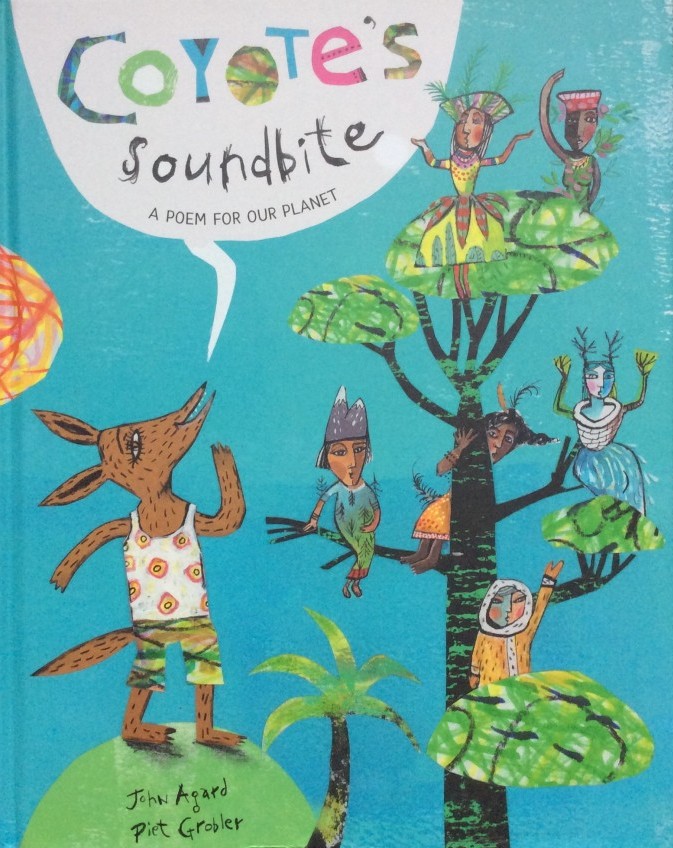Inspiring Young Readers
 posted on 06 May 2021
posted on 06 May 2021
Coyote’s Soundbite by John Agard, illustrated by Piet Grobler
Lantana Publishing is an innovative company that can always be relied upon to produce stunning picture books. This one combines the poetic brilliance of John Agard and vivid visual collage- based treats from Piet Grobler.
Drawing on a number of mythologies gives Agard the chance to play around with the surreal idea of an Earth–goddess environmental conference. The rationale for their involvement in earthly concerns is because of terrible neglect by humans. It promises to be a truly memorable occasion and wise goddesses from Australia to Antartica, the Amazon to Africa are prepared to discuss and debate. They all have the on -going responsibility to oversee nature:
‘A snail on a leaf softly spiralling,
A mole in deep-down burrow unwinding:
The earth goddesses never miss a thing.'
But they reckon without the involvement of Coyote, a traditionally wily trickster who steps out with ‘a zig and a zag’ and plans to infiltrate, disrupt and ultimately influence the outcome of the conference. As it is a female only conference, he disguises himself by wearing his wife’s dress, toeless high heeled shoes and turquoise handbag. He certainly fools two Ravens who give him a seat in the front row!
How can I do justice to the beautiful design of this book? The cover, the end papers and every turn of the page shows colourfully detailed illustrations that surround each piece of text. As with all successful picture books, the words and pictures marry perfectly together, but I liked the way in which the overall design keeps the text cleanly separate. I found that I was reading the words aloud first and then treating myself to take time to explore the accompanying illustrations afterwards. My big wish is to hear John Agard read the narrative poem with his distinctive voice. Luckily, I have heard him perform in the past and can hear it as I read.
When writing a short review of a book such as this, it is difficult to decide on which pages to focus but I have selected the following two examples.
The first double page spread of the story is packed with energy and anticipation as the jungle buzzes with news about the impending conference. There is plenty of white space balanced with a few tall trees. Birds are shown whizzing through the air, all the animals look hopeful, monkeys are leaping across the page and even a small frog looks on from the bottom corner of the page:
‘There they stood on forelegs, on hind legs,
on tip-toe flippers, you name it!
The animals couldn’t wait, couldn’t wait’.
All of the goddesses have their say at the conference and all are impassioned to present their strong case for urgent attention to the environment. I think that my favourite one is Brigid, who is shown against a white background as a wistful watery figure facing leftwards with red deer, rabbits and birds above her head. The facing page is green:
‘Next to speak was Brigid, keeper of the wells,
Whose waters spring from the womb of earth.
A daughter of Moon Mother, Brigid tends
The fire for the storyteller’s word weaving.
But with their forest hide-outs disappearing,
The fairy people are up and leaving.'
I am looking forward to sharing this book with children in my family who I know will be entranced and inspired to think about the need to treasure the natural world, and to create their own interpretation of the story. I really hope that it will be used in schools and that teachers will encourage children of all ages to take time to explore the detailed illustrations as well as basking in the language and the humour.
Strongly recommended.
Karen Argent
May 2021



